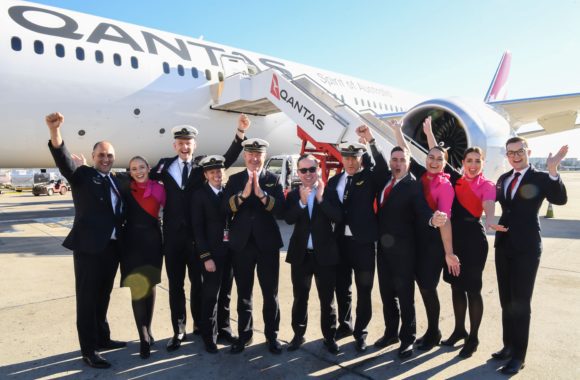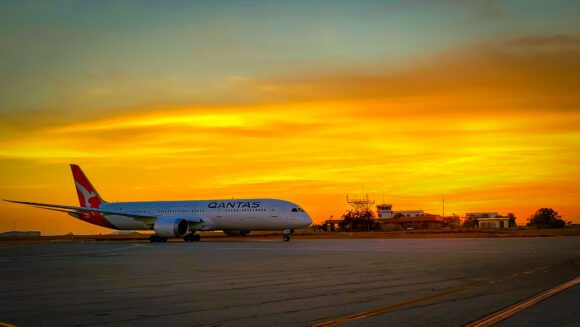
With great interest from especially Australian media, a brand-new Qantas Boeing 787-9 started the world’s longest non-stop flight on Friday, October 18. Freshly delivered VH-NZI departed New York JFK at 9.27 pm local time, arriving at 7.42 am on the 20th in Sydney after a 19-hour 16-minutes hop on the first of three Project Sunrise test flights.
If Qantas really is still undecided on launching 19-hour flights remains to be seen later this year, when the airline is set to decide on the economic and practical feasibility of this kind of endeavor. At least it should have a better view of the pros and cons of getting passengers to sit for almost a day in an airliner.
The first test flight QF7879 had 49 occupants on board, including crew. There was a double cockpit crew, while two extra pilots checked in as passengers.
ZNI was filled up to the brim with 101 tons of fuel, of which some 6000 kilograms should be left on arrival in Sydney to allow for a safe margin for diversions. Take-off weight was 233 tons, so within the 254 tons maximum for the 787-9. Weight includes 1.500 kg of food and beverages.
Qantas and researchers were especially interested in knowing what the 19-hour flight means for the well-being of the occupants. What should be done to increase comfort onboard a dedicated ultra-long-haul airliner, for which Airbus has offered an extended range version of the A350-1000 and Boeing a sub-version of the 777-9.
To find out, crew and passengers were submitted to a number of tests to check their health and well-being. This included varying on the timing meals were served and cabin lighting were used, as Qantas CEO Alan Joyce explained after landing: “Night flights usually starts with dinner and then lights off. For this flight, we started with lunch and kept the lights on for the first six hours, to match the time of day at our destination. It means you start reducing the jetlag straight away.” This will be researched further.
Captain Sean Golding reported a smooth journey except for some variation in headwinds that slowed down QF7879 during the night over the Pacific. “Given how long we were airborne, we were able to keep optimizing the flight path to make the best of the conditions.”
The non-stop test flight arrived in Sydney a few minutes ahead of a one-stop service which departed New York three hours before QF7879 and connected to QF12 in Los Angeles. Actually, this flight operated by an A380 overtook the 787 shortly before Sydney, but on final approach the Dreamliner was given priority and a shorter route to come in.
The second test flight from London to Sydney is scheduled for November and the third from New York to Sydney in December, both with brand-new 787-9s on their delivery flights.





